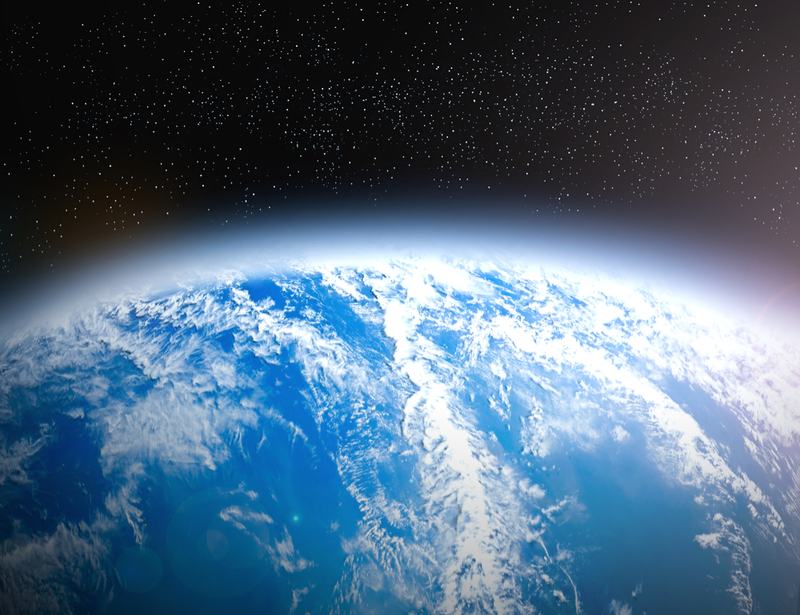The ozone layer is healing itself: what does this mean for our planet?
It seems like almost every day, we’re hit with a fresh news article on Earth’s rapidly disappearing ozone layer, the damage this has caused to our planet, and the steps we must take to prevent this issue from getting worse. Since
the early 1980s (when we first discovered that there was a small hole in the ozone layer above Antarctica), increasing concerns have been raised over the impact that the disappearance of Earth’s most important layer is having
on the environment, as well as human health.

We all know the importance of minimising future damage being caused to the Earth’s vital ozone layer due to the heavy use of chlorofluorocarbons (CFCs). Although they were banned in the year 1996, they spent years attacking the
ozone layer after being released into the air by aerosols, foam products, and the likes of old refrigerators and air conditioning units. However, a recently published report from the United Nations says that the ozone layer is finally starting to repair itself due to the ban of CFCs.
According to UN Environment and the World Meteorological Organisation, evidence presented by the authors of the report shows that the Earth’s ozone layer “has recovered at a rate of 1 to 3 percent per decade since 2000”. Though
this is undoubtedly good news, should we start celebrating just yet? With scientists indicating that climate change is still a big threat to our planet, maybe we should wait on it.
So, is the ozone layer still at risk? Alternatively, if it is gradually healing itself, then what does this mean for our future? phs Wastekit investigates…
Why is the Earth’s ozone layer so important?
Without the ozone layer, life on our planet would cease to exist. This is because the ozone layer (which is a layer in the Earth’s stratosphere) absorbs 97-99% of high-frequency ultraviolet radiation from the sun. This is thanks
to the fact that the ozone layer contains 90% of the ozone found in the atmosphere, and ozone (O3) is very effective at absorbing harmful ultraviolet (UV) rays.
In today’s day and age, most people are very well-educated on the dangers of frequent and long-term exposure to the sun’s UV rays.
At the lower end of the scale, being exposed to UV rays without wearing suitable sun protection can cause painful sunburn, visible damage to the skin (such as actinic keratosis, solar elastosis and liver spots), and even a
rash or allergic reaction. In more serious cases, it can cause cataracts and pterygium (both serious eye problems which can impair vision), and melanoma and non-melanoma skin cancers.
Sadly, skin cancer is now the most common type of skin cancer in the UK, with figures from SKCIN: The Karen Clifford Skin Cancer Charity showing that
in 2010, approximately 12,800 people were diagnosed with malignant melanoma in the country. Statistics also show that 7 people in the UK die each day due to skin cancer, and that 80% of all skin cancers are caused by over-exposure
to UV rays (either through natural sunlight or by using sunbeds).

Skin cancer is also a big concern in Australia, where the hole in the ozone layer across Antarctica passes over each spring. According to statistics from Cancer Council Australia,
skin cancers account for around 80% of all newly diagnosed cancers in Australia every year. The incidence of skin cancer is also one of the highest in the world, and it’s two or three times the rates of skin cancer in Canada,
the US and the UK. The reason why skin cancer is so prevalent in Australia is thought to be due to the fact that most of its residents have the wrong type of skin for their sunnier, warmer climate (thanks to their ancestors
migrating). However, the risk of skin cancer is only going to get higher if the ozone layer continues to disappear over the years.
Since the discovery of the ozone layer hole above Antarctica, we have reduced our global consumption of ozone-depleting substances by 98%. Over the last few years, many have argued about whether the ozone layer is healing itself,
though it’s only now that it has been “confirmed”, both by the authors of the UN report and a research team from the Indian Institute of Technology in Kharagpur.
Is the ozone layer actually healing itself?
According to the results gathered by researchers of the Center of Oceans, Rivers, Atmosphere
and Law Science (CORAL) of IIT Kharagpur, the Antarctic ozone layer is on a “healing” path. They collected data from 1979 to 2017, with the results showing that despite there being a loss of saturation of the ozone layer in
1987, the saturation of loss had significantly reduced between 2001 and 2017.
Back in June 2018, it was reported that UK and US studies discovered that the Earth’s ozone layer had shrunk
by around 4m sq on average since the year 2000. In the more recently published UN report,
it was revealed that the upper ozone layer above the Northern Hemisphere is expected to be completely restored sometime in the 2030s. This process will take longer for the hole above Antarctica, according to a scientific assessment
released at a conference in Quito, Ecuador in December 2018. As this shows, although things are improving, there’s still some time to wait before we can breathe a sigh of relief.
Sadly, this doesn’t mean that the health of our planet is no longer an issue. Recent concerns have been raised over the fact that in some cases, CFCs have been replaced with certain chemicals that are potent global warming gases.
As The Independent explains, contributing emissions of these gases are
growing at an annual rate of around 7%, and they’re expected to effect climate change “very significantly.”
When greenhouse gases (such as carbon dioxide and methane) are released into the air, they gradually raise the temperature of the Earth, which is damaging our planet by causing the polar ice caps to melt and sea levels to rise.
Rising temperatures also increase the likelihood of floods, droughts, storms and other natural disasters occurring across the world.
In fact, the recent Californian wildfires are testament to just how big of an issue climate change is. The Camp Fire, which started on 8th November 2018, caused massive destruction as it tore through various towns and
foothill communities in California, becoming the deadliest wildfire in Californian history. As of 12th December,
the death toll from the fire had risen to 86.
Unfortunately, the temperature of the Earth is also rising due to people simply not reusing or recycling as much of their waste as they should, as well as driving places when they could be cycling, running or walking there instead.
Though these are separate issues, they should be addressed by both businesses and consumers if we want to protect the health of our planet.
What should businesses be doing to save the Earth?
As the warnings suggest, the threat to our environment is far but over. Fortunately, everyone can join in the fight to reduce humankind’s carbon footprint. Here are just some steps you can take to preserve the environment for the
future:
- Have recycling bins located throughout your business premises, and make sure that these are clearly labelled so that the correct waste materials are put in the right bin(s).
- Invest in water coolers to encourage employees and visitors to bring in reusable water bottles instead of buying new single-use plastic ones.
- Set up a Cycle to Work scheme to encourage less of your employees to drive to and from work, or reduce emissions by starting a carpooling scheme.
- Reduce printing and paper usage by moving your business documents online to a Cloud-based system. This can be accessed by your workforce wherever they’re working from.
- Save energy (and reduce your bills) by hanging up signs to encourage employees to switch off the lights when a room is no longer in use or install lighting systems that turn off automatically.
- Bring plants into the office as they remove CO2 from the air.
- Invest in a waste baler to make it quicker and easier to segregate waste for recycling.
- Provide training to educate your staff on the importance of reusing and recycling their waste.
To find out how waste balers and compactors can help you to reduce your business’s environmental impact, as well as save space in your building and give you an opportunity to earn money from your recyclable waste,
contact phs Wastekit for a free Wastesaving Audit.